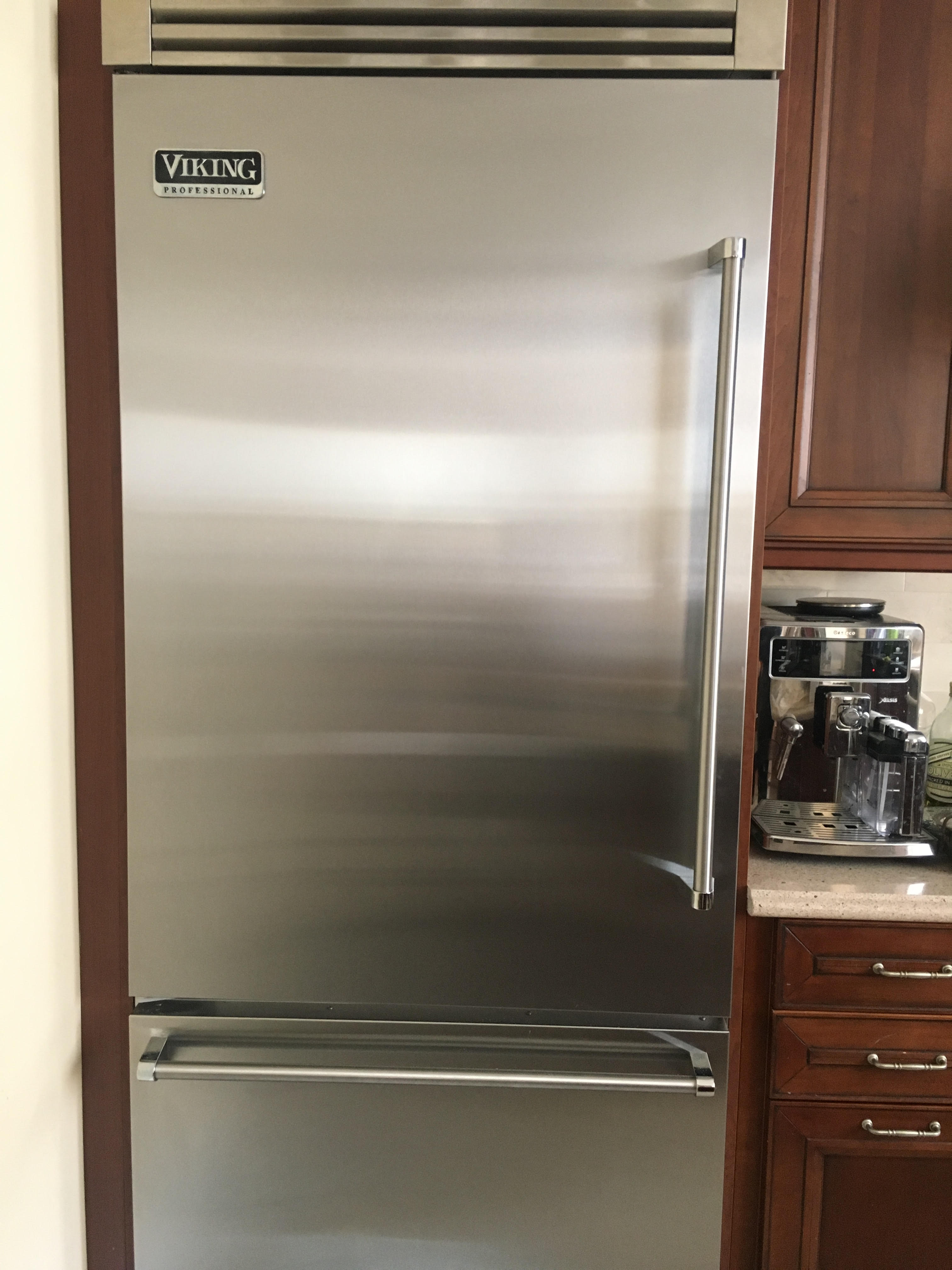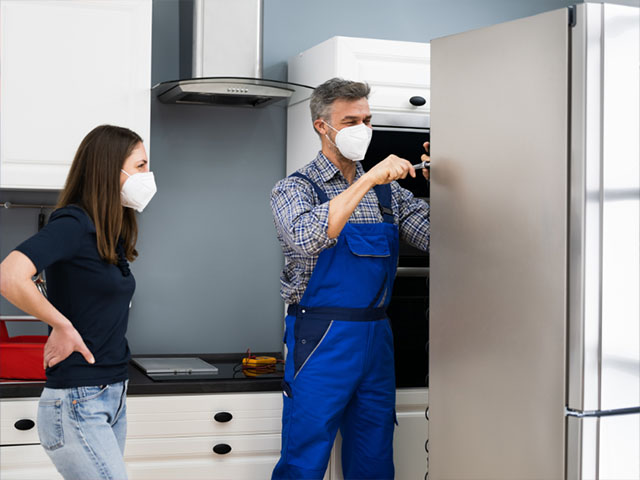Is your Viking freezer not freezing like it should? That sudden loss of cold can turn your kitchen into a mess and spoil your food.
You rely on your freezer to keep things fresh and ready, so when it stops working, it’s frustrating and confusing. But don’t worry—this guide will help you understand why your Viking freezer might not be freezing and what you can do to fix it fast.
Keep reading to get your freezer back to perfect chill and save your food from going to waste.

Credit: momsmenu.co.in
Common Causes Of Freezer Issues
Viking freezer not freezing is a common problem many face. Understanding the common causes helps fix the issue fast. Problems often come from simple things you can check at home. These causes affect the freezer’s ability to stay cold. Knowing them saves time and money on repairs.
Power And Temperature Settings
Check if the freezer is plugged in properly. A loose plug or power outage stops cooling. The temperature setting might be too high. Freezers need cold settings to work well. Set the temperature between 0 and 5 degrees Fahrenheit for best results.
Blocked Air Vents
Air vents inside the freezer must stay clear. Blocked vents stop cold air from moving around. Food or containers can block these vents. Make space between items for air to flow freely. Proper airflow keeps all parts of the freezer cold.
Dirty Condenser Coils
Condenser coils help remove heat from the freezer. Dust and dirt on coils reduce cooling power. Clean coils regularly with a brush or vacuum. Clean coils help the freezer work efficiently and stay cold.
Faulty Door Seals
Door seals keep cold air inside the freezer. Broken or weak seals let warm air in. Check seals for cracks or damage. Replace seals if they do not close tightly. Good seals keep the freezer cold and save energy.
Quick Troubleshooting Steps
When a Viking freezer stops freezing, quick checks can save time and money. Simple steps often fix common problems fast. These easy actions help find the cause and guide you toward a solution.
Check The Power Supply
Make sure the freezer is plugged in firmly. Look for any loose or damaged cords. Test the outlet with another device to confirm power flow. A power interruption can stop cooling immediately.
Adjust Thermostat Settings
Verify the thermostat is set to the correct temperature. The ideal setting is usually between -18°C and -20°C (0°F to -4°F). Turn the dial slightly colder if needed. Incorrect settings stop proper freezing.
Clear Airflow Obstructions
Air must flow freely inside the freezer for cool air to spread. Remove any items blocking vents or fans. Avoid overfilling the freezer, which can limit airflow. Good circulation keeps the temperature even.
Inspect And Clean Coils
Dirty coils reduce cooling efficiency. Locate the condenser coils, usually at the back or bottom. Use a brush or vacuum to remove dust and debris gently. Clean coils help the freezer maintain cold temperatures.
Examine Door Gaskets
Check door seals for cracks or gaps. Damaged gaskets let warm air in, affecting freezing. Clean gaskets with warm, soapy water to remove dirt. Replace seals if they no longer close tightly.
When To Defrost Your Freezer
Knowing when to defrost your Viking freezer is key to keeping it cold and efficient. Frost buildup can block air flow, making the freezer work harder. This leads to poor cooling and higher energy bills. Regular defrosting helps your freezer run smoothly and saves money. Watch for signs that tell you it’s time to defrost.
Signs Of Frost Buildup
Frost appears as white or icy patches inside the freezer. Thick layers of frost reduce space for food. You might notice the freezer is not as cold as before. Food may freeze unevenly or thaw quickly. The freezer may make strange noises or run constantly. These signs mean frost is blocking cold air. It’s time to defrost your freezer.
Defrosting Methods
Turn off the freezer and unplug it before defrosting. Remove all food and store it in a cooler. Leave the freezer door open to let the ice melt. Place towels around to catch water from melting ice. Use a bowl of hot water inside to speed up melting. Never use sharp tools to scrape ice off. Dry the freezer well before turning it back on. This keeps frost from forming quickly again.
Preventing Ice Accumulation
Keep the freezer door closed as much as possible. Avoid putting warm or wet food inside. Check the door seals for damage or dirt. Clean the seals regularly to keep air out. Don’t overload the freezer; air needs to flow freely. Defrost the freezer once frost reaches about a quarter inch. These steps reduce frost and keep your Viking freezer cold.

Credit: www.youtube.com
Advanced Fixes For Persistent Problems
Some Viking freezers stop freezing even after basic fixes. These issues need deeper checks and repairs. Advanced fixes can solve persistent problems. They target parts that control cooling and power flow. Understanding each part helps in effective repair. Below are key steps to try when simple fixes fail.
Testing The Thermostat
The thermostat controls the freezer temperature. It tells the compressor when to turn on or off. Use a multimeter to test its continuity. Disconnect power before testing. If the thermostat shows no continuity, it needs replacement. A faulty thermostat stops the freezer from cooling.
Replacing The Evaporator Fan
The evaporator fan moves cold air inside the freezer. If it stops working, the freezer stays warm. Listen for fan noise when the freezer runs. Check if the fan blades spin freely. Replace the fan motor if it is noisy or not spinning. A working fan keeps air circulating evenly.
Checking The Start Relay
The start relay helps the compressor start running. A bad relay can prevent the compressor from working. Remove the relay and shake it gently. A rattling sound means it is broken. Test it with a multimeter for resistance. Replace a faulty start relay to restore compressor function.
Evaluating The Compressor
The compressor pumps refrigerant to cool the freezer. It should run quietly with a steady hum. Check for overheating or unusual noises. Use a multimeter to test compressor windings. If the compressor fails tests, it may need repair or replacement. A bad compressor stops the freezer from freezing.
Preventive Maintenance Tips
Preventive maintenance helps keep your Viking freezer working well. Small care steps stop big problems. You save time and money. Your freezer stays cold and fresh longer.
Regular Cleaning Schedule
Clean your freezer every few months. Remove frost and ice buildup carefully. Wipe shelves and walls with mild soap. Dry all surfaces before closing the door. Dirt and ice block cold air flow.
Proper Food Storage
Do not overfill your freezer. Leave space for air to circulate. Use airtight containers to keep food fresh. Label items with dates to avoid waste. Proper storage helps maintain steady temperatures.
Maintaining Door Seals
Check door seals for cracks or dirt. Clean seals with warm water and a cloth. Replace seals if they are worn out. Good seals keep cold air inside and save energy.
Monitoring Temperature Regularly
Use a freezer thermometer to check the temperature. Ideal freezer temperature is 0°F (-18°C). Adjust settings if temperature rises. Regular checks prevent food spoilage and freezer damage.

Credit: 5starappliancerepair.pro
Frequently Asked Questions
Why Is My Viking Freezer Not Freezing Properly?
A dirty condenser or blocked vents can stop cold air flow, causing poor freezing.
How Do I Fix A Viking Freezer Not Freezing?
Check the temperature settings, clean vents, and ensure door seals are tight.
Can A Power Outage Affect Viking Freezer Freezing?
Yes, power outages can stop the compressor, leading to thawed or warm freezer.
What Causes Frost Buildup In Viking Freezers?
Frost forms from warm air entering due to a broken door seal or frequent opening.
When Should I Call A Technician For Freezer Issues?
Call a pro if cleaning and settings don’t fix freezing or if strange noises occur.
Conclusion
A Viking freezer not freezing can cause big problems at home. Check the door seal and temperature settings first. Clean the coils to help it cool better. Avoid overloading the freezer with too much food. Small fixes often bring the cold back quickly.
Regular care keeps your freezer working well. Don’t wait too long to fix issues. A cold, working freezer keeps food fresh and safe. Simple steps can save time and money. Keep your Viking freezer freezing strong every day.
